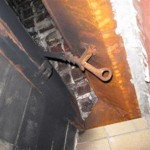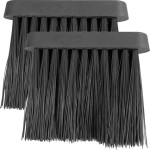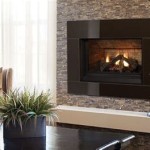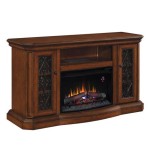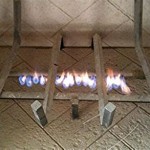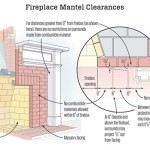Direct Vent Gas Fireplace Insert: A Comprehensive Guide
A direct vent gas fireplace insert offers a significant upgrade for homeowners seeking to improve the efficiency and aesthetics of their existing fireplace. These inserts provide a convenient and effective way to enjoy the warmth and ambiance of a fire without the drawbacks of traditional wood-burning fireplaces. Understanding the features, benefits, and installation requirements of direct vent gas fireplace inserts is crucial for making an informed decision.
Direct vent technology represents a modern approach to fireplace operation. Unlike traditional fireplaces that rely on the home's chimney to exhaust combustion byproducts, direct vent systems utilize a sealed combustion chamber. This sealed system draws air from outside the home for combustion and exhausts the resulting gases directly outside through a dedicated vent pipe. This process ensures that no combustion byproducts, such as carbon monoxide, enter the living space, contributing to a safer and healthier indoor environment.
Choosing the right direct vent gas fireplace insert involves considering several factors, including the size of the existing fireplace opening, the desired heat output (measured in BTUs), the aesthetic preferences, and the venting requirements. Proper installation is paramount for safe and efficient operation, typically requiring a professional installer certified in gas appliance installation.
Understanding Direct Vent Technology
The defining characteristic of a direct vent gas fireplace insert lies in its venting system. This system consists of two concentric pipes: one pipe draws fresh air from outside the home into the combustion chamber, while the other expels exhaust gases. The pipes can be vented horizontally through an exterior wall or vertically through the roof. The sealed combustion chamber ensures that the air used for combustion is separate from the indoor air, preventing drafts and minimizing heat loss. This closed system also prevents the backdrafting of combustion byproducts into the home, a potential hazard associated with traditional fireplaces.
The direct vent system contributes significantly to the efficiency of the fireplace insert. Because it draws air from outside, it does not deplete the home's heated air. This prevents the fireplace from creating a negative pressure environment, which can cause cold drafts and increase heating bills. The sealed system also minimizes heat loss through the vent, further enhancing energy efficiency.
The versatility of direct vent systems allows for flexible installation options. They can be installed in homes without existing chimneys, as the vent pipes can be routed directly through an exterior wall. The horizontal venting option is particularly advantageous for installations on upper floors or in situations where vertical venting is impractical. The venting system must be installed according to the manufacturer's specifications to ensure proper operation and safety.
Benefits of Direct Vent Gas Fireplace Inserts
Direct vent gas fireplace inserts offer a range of benefits compared to traditional wood-burning fireplaces and other heating options. These benefits span convenience, efficiency, safety, and aesthetics, making them a popular choice for homeowners.
Convenience is a major advantage. Unlike wood-burning fireplaces, gas inserts require no wood storage, chopping, or tending to the fire. They can be easily ignited and extinguished with the flip of a switch or the push of a button on a remote control. The adjustable flame height allows for precise control over the heat output and ambiance. Many models also feature thermostatic controls, which automatically maintain a desired room temperature.
Energy efficiency is another key benefit. Direct vent inserts are significantly more efficient than traditional fireplaces, converting a higher percentage of fuel into usable heat. This is due to the sealed combustion chamber and the controlled airflow, which minimizes heat loss through the vent. The efficiency translates into lower heating bills and reduced energy consumption. Some models also qualify for energy efficiency rebates or tax credits, further enhancing their affordability.
Safety is paramount. The sealed combustion chamber and direct venting system eliminate the risk of carbon monoxide poisoning and backdrafting. The glass front of the insert prevents sparks and embers from escaping into the room, reducing the risk of fire hazards. Gas fireplace inserts also produce significantly less particulate matter than wood-burning fireplaces, contributing to cleaner air quality.
Aesthetics are also a consideration. Direct vent inserts come in a variety of styles and finishes to complement any décor. They can mimic the look of a traditional wood-burning fireplace with realistic-looking logs and flames. Options include various firebox linings, decorative fronts, and remote control features to enhance the overall visual appeal.
Key Considerations Before Installation
Before purchasing and installing a direct vent gas fireplace insert, several factors need careful consideration. These factors include sizing, BTU output, venting requirements, installation costs, and local regulations. A thorough assessment of these aspects will ensure a successful and safe installation.
Sizing is crucial. The insert must be properly sized to fit the existing fireplace opening. This involves measuring the height, width, and depth of the firebox. It's important to consult with a qualified installer to determine the appropriate size and ensure a proper fit. An improperly sized insert may not function effectively or may pose safety hazards.
BTU output determines the heating capacity of the insert. The appropriate BTU level depends on the size of the room to be heated and the climate. A larger room or a colder climate will require a higher BTU output. An undersized insert may not adequately heat the space, while an oversized insert may overheat the room. Consulting with a professional will help determine the optimal BTU output for the specific application.
Venting requirements are specific to each model and installation. The vent pipes must be installed according to the manufacturer's specifications regarding length, diameter, and termination. The venting system must also comply with local building codes and safety regulations. Incorrect venting can lead to poor combustion, backdrafting, and potential safety hazards.
Installation costs can vary depending on the complexity of the installation and the cost of materials. The installation typically involves connecting the gas line, installing the venting system, and fitting the insert into the fireplace opening. It is crucial to hire a qualified and certified installer to ensure a safe and proper installation. Obtaining multiple quotes from different installers can help compare costs and ensure a competitive price.
Local regulations and permits may apply to the installation of a gas fireplace insert. It is important to check with the local building department to determine the specific requirements and obtain any necessary permits before starting the installation. Compliance with local regulations ensures that the installation meets safety standards and avoids potential fines or penalties.
Additionally, consider the long-term operational costs, including the price of natural gas or propane. Propane tends to be more expensive than natural gas, so if you have access to natural gas, that could be a more economical option.
Homeowners should also consider the maintenance required for their insert. While significantly less than wood burning fireplaces, an annual inspection and cleaning by a qualified technician is recommended to ensure safe and efficient operation. This includes checking the venting system, cleaning the burner, and inspecting the gas connections.
Finally, it is essential to thoroughly research different models and brands before making a purchase. Read reviews, compare features, and consider the reputation of the manufacturer. Choosing a reputable brand with a solid warranty can provide peace of mind and ensure long-term satisfaction.

Majestic Ruby 35 Direct Vent Gas Insert Ruby35 North Country Fire

Direct Vent Gas Insert With Intellifire Plus Ignition System Ipi Natural Nee Fireplaces

Oakville Gdix4 Direct Vent Gas Fireplace Inset By Napoleon

Majestic 30 Inch Ruby Direct Vent Gas Fireplace Insert With Blower
Understanding How Direct Vent Works Heat Glo

Rushmore 30 Direct Vent Fireplace Insert Fine S Gas

Majestic Jasper Gas Direct Vent Fireplace Insert Jasper30 Hvacdirect Com

Majestic 35 Inch Ruby Direct Vent Gas Fireplace Insert

Napoleon Ascent Dx42 Direct Vent Gas Burning Fireplace

White Mountain Hearth Rushmore Direct Vent Insert With Truflame Tech Fireplaces Usa


